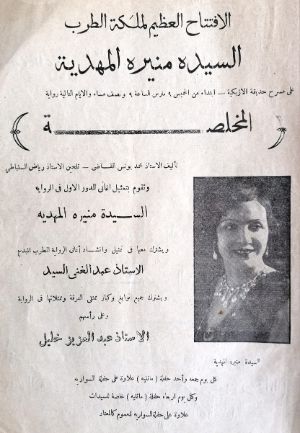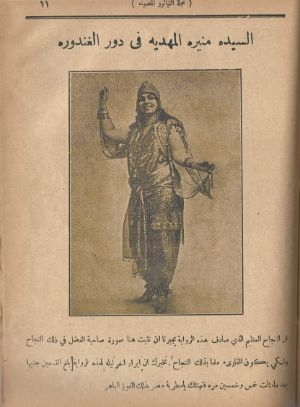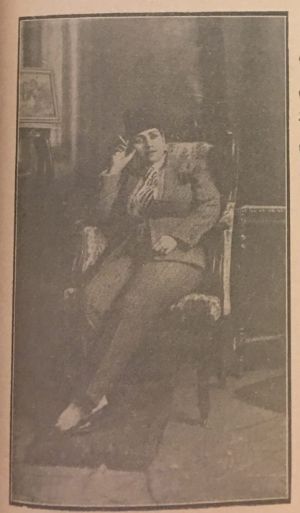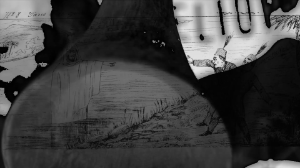
Terrible Sounds, Film still
© Philip Rizk
Inside the Scene: Cairo
1
CairoandJazz
Lineages of Improvised Music
When looking at the rich, global history of jazz music, the way it manifests itself in composition through improvisation, interpretation and performance perhaps tells a bigger story than we are led to believe. Regardless of whether or not it is driven by an explicit narrative, jazz music becomes an apt tool for critical reflection and historicity much in the same way Walter Benjamin once wrote of storytelling: “Traces of the storyteller cling to the story the way the handprints of the potter cling to the clay vessel”.
By using music as a vessel to travel through time, we can experience jazz music from Egypt and the multiplicity of stories told within the works presented by Maurice Louca and the artists he and the festival team have curated in this year’s Cairo focus at Jazzfest Berlin. And while jazz music might not be the first genre one thinks of when conjuring up the sounds of Egypt, the history of improvised music dates back to the earliest Tarab works: from Mounira El Mahdeya, Abdel-Latif El-Banna and Fatma Serry through to the more explicit jazz works of Salah Ragab and his collaborations with Hartmut Geerken and, later, Sun Ra.
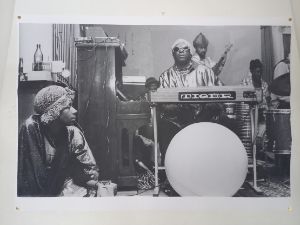
Sun Ra performes in the flat of Hartmut Geerken
© Hartmut Geerken, Foto: Philip Rizk
As we will see in the Cairo programme of Jazzfest Berlin, this tradition of improvisation is a key element driving much of the works on show as well as the range of electronic-acoustic and contemporary instrumental music coming out of the SWANA region. And while the prolific portfolio of music that Maurice Louca has produced over the past two decades does not always fall under the umbrella of jazz, his ability to challenge form while using improvisation as a compositional element has led to some of his greatest works. That said, in his most recent release, “Elephantine”, which will be performed at Jazzfest Berlin, we encounter Maurice’s most explicit jazz album to date.

Maurice Louca
© Christer Nexmark
2
Voicesfromthepast
Nancy Mounir: “Nozhet El Nofous (Those who were not invited)”
Jazzfest Berlin – Cairo
© Berliner Festspiele / Jazzfest Berlin
“If we break away from the assumptions that confine jazz as a genre, and focus on the core of what jazz has been and could be, we might find a lot of similarities with many different lineages of Arabic music”, Maurice Louca writes in his curatorial statement.
This idea becomes clearer when experiencing Nancy Mounir’s research project and album “Nozhet El Nofous”, whose release is planned for later this year.
At Jazzfest Berlin Nancy Mounir’s album and research will culminate within a video work exploring the lives and music of several female Egyptian singers from the 1920s who often worked with tuning systems beyond the scales standardised by the 1932 Congress of Arab Music in Cairo: a conference that some argue was responsible for erasing the future of Arabic music by standardising it to a Western tuning system, while at the same time excluding many of the leading artists performing at the time. Nancy has spent six years jamming with the ghosts of those excluded artists, such as Mounira El Mahdeya, Fatma Serry and Hayat Sabri among others, not only unearthing their narratives and musical genius but also exploring what it might mean for our future to transpose their music into the present.
Jazzfest Berlin – Cairo
© Berliner Festspiele / Jazzfest Berlin
3
QuestforNationalIdentity
Philip Rizk & Nadah El Shazly: Terrible Sounds
Also experimenting with temporality, improvisation, and exploring the quest for national identity, comes the commissioned video work “Terrible Sounds” by Philip Rizk in collaboration with Nadah El Shazly. As film-maker Philip Rizk says: “Music is extremely important in creating a kind of national imaginary of what constitutes the culture of a place.” The film explores this topic through original footage of the repeated opening of King Tutankhamun’s tomb in the 1920s, before and after independence, accompanied by two classical compositions created in imperialist and post-colonial contexts respectively. These are juxtaposed with recent recordings inspired by “Muharram 1392”, an experimental free jazz album by Salah Ragab and Hartmut Geerken recorded in 1972.
For their commissioned work at Jazzfest Berlin, Nadah El Shazly and Philip Rizk resurrected this out of print album and asked several musicians to respond musically to it, thus creating the music for the video. In addition to Nadah El Shazly, the recordings feature Maurice Louca, Ayman Asfour and Sharif Sehnaoui, as well as the recently tragically deceased musician Hartmut Geerken, who was the only contributor to the historic “Muharrahm” album. Their art allows us to listen to the dormant stories that have been overheard in the region’s colonially shaped history and its search for a national identity.
Jazzfest Berlin – Cairo
© Berliner Festspiele / Jazzfest Berlin
A Space to Drift Off
Philip Rizk and Nadah El Shazly in conversation with Maha ElNawabi
Maha ElNawabi: Tell us a bit about the origins of this project, where the idea came from – and in essence, what kind of story are you trying to tell?
Philip Rizk: Most of the projects I work on are process-based, which means that there is a lot of improvisation. There are often pieces of a puzzle that only come together by the very end. The beginning of this project goes back to a conversation about Mohamed El Bayoumi, who is probably Egypt’s first cinematographer and filmmaker. One of the most important things he did was a film documenting the second opening of the tomb of Tutankhamun. This is one of the historical narratives that underpin our project called “Terrible Sounds”. The tomb was most famously discovered and opened by a British explorer and this was documented by an American cinematographer. But when the Egyptians were granted a pseudo-independence from the British occupation, the Egyptians proceeded to close and then reopen the tomb as a kind of official opening. In my projects, there are often different layers and narratives that somehow come together. The musical aspect is a kind of accompaniment to this historical narrative. The overarching issue that I am addressing is the creation and fabrication of the nation state – this is where music is critical. In the case of Egypt, the pharaohs are an essential part of that narrative, but then music is also extremely important in creating a kind of national imaginary of what constitutes the culture of a place. So, this is where two seemingly unrelated issues come together in this project.
Maha ElNawabi: Could you tell us a bit about your collaborative process? When did “Muharram”, the collaboration between Salah Ragab and Hartmut Geerken, come into the mix?
Philip Rizk: The last film we worked on together, called “Mapping Lessons”, looks quite different: it is a feature length fictional travel film, but again it addresses this issue of the creation of the nation state. In that case it deals with Syria and the Levant before the lines were drawn between these states. One of the things that was happening in the making of that film is I was trying to figure out what sounds would accompany the images. For me, these are not disconnected things. I do not work on a film and then create a soundtrack after the fact, or assign someone the task of making a soundtrack to something I am working on. They very much need to be in conversation with me.
Nadah El Shazly: What was really interesting to me in “Mapping Lessons” was Philip’s use of archival footage, and how he was very open to using the sound of the footage or not at all – how he was looking to reinterpret some sounds from the archive. There is a narrative at the end of “Mapping Lessons” that reimagines itself, and it was very clear that he wanted to use Salah Ragab and Hartmut Geerken’s “Muharram 1392”, which became the core of the work I’m doing with Philip. With that came the idea for “Terrible Sounds”: that we wanted to reimagine “Muharram 1392” and how it would sound today – because of many musicians’ parallel interest in playing improvised music and the way that currently evokes references to improvised music from the 1920s to the 1970s.
Goodbye Hartmut Geerken
Obituary by Philip Rizk
In the summer of 2017, I was searching for sounds for my film “Mapping Lessons” when I discovered the out of print album “Muharram 1392”, a free improvisation session recorded in Hartmut Geerken’s living room in Cairo in 1972. When I found that he was still playing music, I called him. He was excited to receive a call from Cairo and to talk about his work there almost 50 years ago. Unsurprisingly, he accepted the invitation to record an album with contemporary musicians from the region.
Maha ElNabawi
— text & interviews
Cairo-based writer, music journalist, content producer Maha ElNabawi is a co-founder of the online journal Mada Masr. Her music writing was featured in the Wire UK, The Guardian, Spex, The National UAE and Norient. She is contributing author in the book “Ten Cities”, a socio-political critique through the lens of dance music and club culture, as well as co-creator of “Katalog”, an Arabic podcast featuring musicians from the MENA region. Maha ElNabawi is currently working on a second book about contemporary music from the Arab world and canceled futures .
